21 September
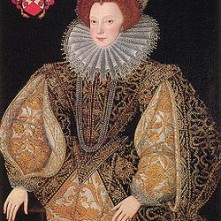 1550 – Death of William Rugg (Repps), Bishop of Norwich. He was buried at the cathedral there. Rugg supported Henry VIII's quest for an annulment of his marriage to Catherine of Aragon and his subsequent supremacy, but his conservativism in other areas caused conflict between him, Thomas Cromwell and Thomas Cranmer. Rugg resigned his episcopate in January 1550 in return for pardons for his alleged support of the rebels in Kett's Rebellion.
1550 – Death of William Rugg (Repps), Bishop of Norwich. He was buried at the cathedral there. Rugg supported Henry VIII's quest for an annulment of his marriage to Catherine of Aragon and his subsequent supremacy, but his conservativism in other areas caused conflict between him, Thomas Cromwell and Thomas Cranmer. Rugg resigned his episcopate in January 1550 in return for pardons for his alleged support of the rebels in Kett's Rebellion.
1557 – Burial of Henry Pendleton, theologian, chaplain and friend of Bishop Bonner, at St Stephen Walbrook, London. Pendleton is known for his changing religious beliefs: he was against Lutheranism in Henry VIII's reign, supported Protestantism in Edward VI's reign and then converted back to Catholicism in Mary I's reign.
1558 - Death of Charles V, former Holy Roman Emperor, from malaria at the monastery of Yuste in the Extremadura region of Spain. He had previously been suffering from debilitating attacks of gout which had necessitated him being carried around in a chair. Charles was buried at the monastery church, but later moved to the Royal Pantheon of El Escorial, the Royal Palace at San Lorenzo de El Escorial near Madrid.
1578 - Marriage of Robert Dudley, Earl of Leicester, and Lettice Devereux (née Knollys) widow of Walter Devereux, Earl of Essex, at Leicester's house in Wanstead, Essex. The marriage was low-key because Leicester had not told Elizabeth I of his relationship with Lettice.
1579 – Burial of Sir Edward Fitton, president of Connacht and Thomond, Vice-Treasurer and Treasurer-at-Wars during Elizabeth I's reign. He was buried beside his wife, Anne, at St Patrick's Cathedral in Dublin, Ireland.
22 September
1515 - Anna von Jülich-Kleve-Berg, or Anne of Cleves, was born near Düsseldorf. She was the second daughter of John III, Duke of Jülich, Cleves and Berg, an important German ruler, and Maria of Jülich-Berg. Anne had royal blood; not only was she descended from Edward I, she was also, on her father's side, closely related to Louis XII of France and the Duke of Burgundy. Anne was Henry VIII's fourth wife.1544 – Death of James Nedeham, architect, while accompanying King Henry VIII to Boulogne. He was buried in Boulogne at the church of Our Lady, and a monument was erected to him at the church in Little Wymondley, Hertfordshire. Nedeham worked for Cardinal Wolsey on York Place, and then for the King on Hampton Court Palace, the Jewel House at the Tower of London and St Augustine's in Canterbury.
1557 – Death of Robert Steward, Prior and Dean of Ely, at Ely. He was buried in Ely Cathedral.
1557 – Death of Robert Warton, Bishop of Hereford. He was buried in Hereford Cathedral, in the north-east transept.
1560 – Burial of Amy Dudley (née Robsart), wife of Robert Dudley, Earl of Leicester, at St Mary's, Oxford.
1610 – Burial of Puritan politician and author Sir Francis Hastings at North Cadbury Church in Somerset, next to his wife. Hastings was a member of Parliament and Sheriff in Leicestershire during Elizabeth I's reign, and is known for his Puritan pamphlets, which included “A Watch-Word to All Religious, and True Hearted English-Men”.
23 September
1568 – Battle of San Juan de Ulúa, near present day Veracruz, Mexico, between Spanish forces and English privateers led by John Hawkins. The Spanish forces were victorious.1571 - Forty-nine year-old Bishop of Salisbury, Bishop John Jewel, died at Monkton Farleigh Manor after being taken ill while preaching a sermon in Lac*ck. He was laid to rest in Salisbury Cathedral.
1605 – Burial of William Averell, pamphleteer, at St Peter's Cornhill. Averill's works included the romantic “An excellent historie, both pithy and pleasant, on the life and death of Charles and Julia, two Brittish, or rather Welsh lovers” (1581), the Protestant “A wonderfull and straunge newes, which happened in the county of Suffolke, and Essex, the first of February, being Friday, where in rayned wheat, the space of vi or vii miles compass” (1583), a collection of moral narrative “A Dyall for Dainty Darlings” (1584) and “A Mervalious Combat of Contrarieties” (1588).
24 September
1486 - Arthur, Prince of Wales and son of Henry VII, was christened at a lavish ceremony at Winchester Cathedral.1516 – Birth of Richard Pate, lawyer, member of Parliament and refounder of Cheltenham Grammar School, now known as Pate's Grammar School.
1526 – Sometime before 24th September 1526, Marmaduke Huby, Abbot of Fountains since 1495, died at around the age of 87. It is thought that he was buried under the floor of the chapter house.
1561 – Birth of Edward Seymour, Viscount Beauchamp, son of Katherine Grey (sister of Lady Jane Grey) and Edward Seymour, 1st Earl of Hertford, in the Tower of London. He was born in the Tower because his parents had been imprisoned for marrying without the Queen's permission.
1589 – Executions of William Spenser, Roman Catholic priest and martyr, and layman Robert Hardesty at York. Spenser was executed for being a priest, and Hardesty for sheltering Spenser.
25 September
1513 - Vasco Núñez de Balboa, the Spanish explorer, reached the Pacific Ocean. He was the first European to have discovered the Pacific Ocean from the New World.1525 - Explorer, navigator and naval administrator Stephen Borough (Burrough) was born at Borough House, Northam Burrows, Northam in Devon, to Walter Borough and his wife Mary Dough.
1534 – Death of Pope Clement VII in Rome from eating a death cap mushroom. He was laid to rest in Santa Maria sopra Minerva.
1554 – Death of Richard Sampson, Bishop of Coventry and Lichfield, and former President of the Council of the Welsh Marches, at Eccleshall in Staffordshire. He was buried in the parish church at Eccleshall. Sampson had acted as the King's Proctor at the fall of Anne Boleyn in 1536.
1555 – The Peace of Augsburg, or Augsburg Settlement, was signed by Charles V, Holy Roman Emperor, and the princes of the Schmalkaldic League at Augsburg.
1558 – Gertrude Courtenay, Marchioness of Exeter, made her will. She died soon after and was buried in Wimborne Minster, Dorset. Gertrude was the mother of Edward Courtenay, 1st Earl of Devon, who was imprisoned for his part in Wyatt's Rebellion in 1554. Gertude, herself, was imprisoned in 1538, and her husband was executed for treason.
1584 – Death of Thomas Copley, Roman Catholic, in exile near Antwerp. He had served Elizabeth I as Commissioner of the Peace for Surrey, and she was godmother to his son, Henry, but he lost royal favour when he converted to Catholicism in 1563. He left England in 1570, being unable to accept royal supremacy and Elizabeth I's religious measures.
1586 – Mary, Queen of Scots was moved to Fotheringhay Castle in Northamptonshire, and Elizabeth finally backed down and agreed to the appointing of 36 commissioners to act as judges in her trial.
1594 – Death of Gregory Fiennes, 10th Baron Dacre, at Chelsea. He was buried in Chelsea Old Church.
1602 – Death of William Redman, Bishop of Norwich, at the Episcopal Palace. He was buried in the cathedral choir.
26 September
1533 – Death of William Benet, diplomat, at Susa in Italy. He had been appointed Henry VIII's Resident Ambassador to Rome in 1529 and remained in that position until the break with Rome. He was on his way home from Rome when he died.1555 – Death of Thomas Berthelet, printer, in London. Berthelet had been Henry VIII's printer from 1530 until the King's death in 1547.
1580 - Sir Francis Drake arrived at the port of Plymouth in the Golden Hind, which was laden with treasure and spices after his three year voyage around the world. Drake was the first Englishman to circumnavigate the globe, and was rewarded by Queen Elizabeth I with a knighthood on 4th April 1581, aboard the Golden Hind at Deptford.
1588 – Death of Sir Amias (Amyas) Paulet, administrator, diplomat, Governor of Jersey and gaoler of Mary, Queen of Scots. He was buried in St Martin-in-the-Fields, Westminster. Paulet served Elizabeth I as her resident ambassador in France and a Privy Councillor, and was present at the execution of Mary, Queen of Scots. When he was acting as Mary's gaoler, Elizabeth I had suggested that it would be easier if Paulet quietly murdered her. He refused.
1592 – Burial of Thomas Watson, poet and translator, at St Bartholomew-the-Less. Watson is known for his unusual eighteen line sonnets and his Latin works.
1595 – Burial of Sir Owen Hopton, administrator and politician, at St Dunstan's Church, Stepney. Hopton served Elizabeth I as Lieutenant of the Tower of London from 1570-1590, as a member of Parliament and a Sheriff.
27 September
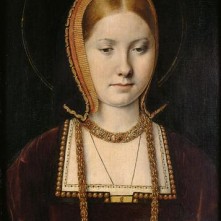 1442 – Birth of John de la Pole, 2nd Duke of Suffolk, to William de la Pole, 1st Duke of Suffolk, and his wife Alice (née Chaucer). Suffolk married the six year-old Margaret Beaufort, future mother of Henry VII, in 1449, but the marriage was annulled by Henry VI in 1453, and he went on to marry Elizabeth, daughter of Richard of York and sister of Edward IV.
1442 – Birth of John de la Pole, 2nd Duke of Suffolk, to William de la Pole, 1st Duke of Suffolk, and his wife Alice (née Chaucer). Suffolk married the six year-old Margaret Beaufort, future mother of Henry VII, in 1449, but the marriage was annulled by Henry VI in 1453, and he went on to marry Elizabeth, daughter of Richard of York and sister of Edward IV.
1488 – Death of William Hobbes, physician and surgeon. He was buried in Holy Trinity Priory, Aldgate, London. Hobbes served Richard, Duke of York, and Edward IV, and was Royal Physician to Richard III. He became Master of St Mary of Bethlehem Hospital (Bedlam) in 1479.
1501 - Fifteen year-old Catherine of Aragon left the port of Laredo in Spain bound for England to marry Arthur, Prince of Wales. It was her second attempt at sailing from Spain to England. Her first attempt, on 17th August, from A Coruña, had been a failure: strong storms in the notoriously rough Bay of Biscay had forced Catherine's fleet to land at Laredo, near Bilbao. She landed at Plymouth on 2nd October.
1540 – Birth of Michael Heneage, politician and antiquary. Heneage was a member of Parliament, a Keeper of the Records in the Tower of London, and a member of the Society of Antiquaries.
1571 – Death of Sir William Garrard, merchant, in London. He was buried in the church of of St Magnus the Martyr near London Bridge. Garrard was Mayor of London in 1555, and a member of Parliament during Mary I's reign. He also went on voyages to Guinea in the 1550s and 1560s, and became a consul of the Russia Company in 1553.




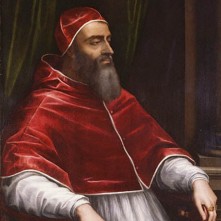

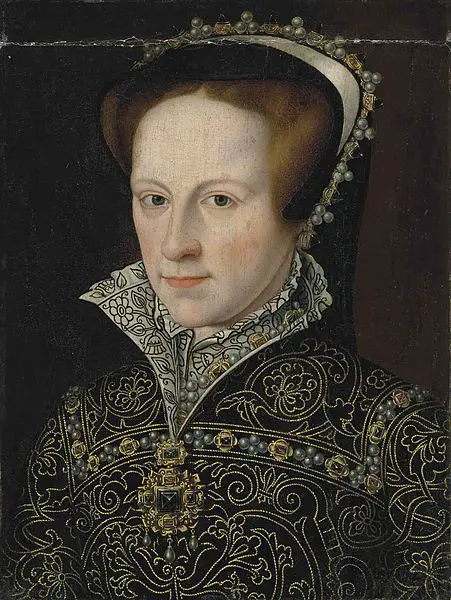
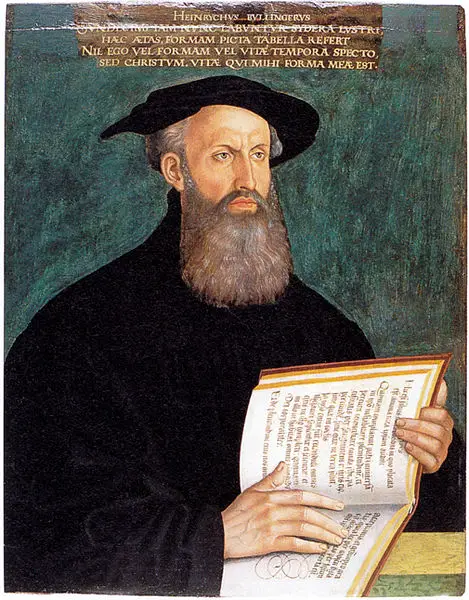
Leave a Reply